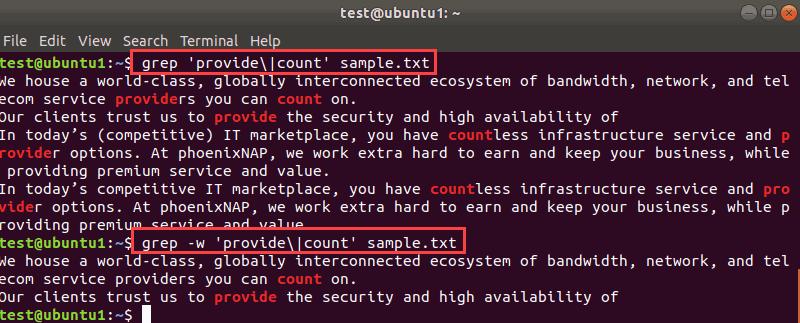

Similar to lookbehind we can use lookahead to print last word before pattern match using grep # echo "field1 field2 field3 field4" | grep -oP '\w+(?= field3)'Ħ. Print last word before pattern match using grep with lookahead We can do the same using perl extended patterns # echo "field1 field2 field3 field4" | grep -oP 'field1 \K\w+(?= field3)'ĥ. Here I wish to print text between field1 and field3 # echo "field1 field2 field3 field4" | grep -oP '(?<=field1 )\w+(?= field3)'

Now we can use both lookahead and lookbehind to print content between two matched pattern. Print content between two matched pattern Here we use \s to match whitespace characterĤ. Some more example with little tweak # echo "field1 field2 : field3 field4" | grep -oP '(?<=field2\s: )*' Now with lookbehind I showed examples to print next word after pattern match but to print everything in line after pattern match # echo "field1 field2 field3 field4" | grep -oP '(?<=field2 ).*' Print everything in line after pattern match We showed various examples to print next word after pattern match using grep, now we will do the same with awk # echo "field1 field2 field3 field4" | awk ''ģ. Print next word after pattern match 2.1 Using awk
#Grep two words how to
How to print or grep only the matched string or text or word or pattern in Linux using bashĢ. Here \K means keep the stuff left of the \K, don't include it in $& # echo "field1 field2 field3 field4" | grep -oP 'field3 \K\w+' Now we will use perl extended pattern to print next word after pattern match. Similarly to print next word after pattern match of field2 # echo "field1 field2 field3 field4" | grep -oP '(?<=field2 )\w+' field3 # echo "field1 field2 field3 field4" | grep -oP '(?<=field3 )*' In the below example I print next word after pattern match i.e. Let's look at some examples to print next word after pattern match. Print next word after pattern match using grep 1.1 Using lookbehind The construct for positive lookbehind is (?<=text) a pair of parentheses, with the opening parenthesis followed by a question mark, “less than” symbol, and an equals sign.ġ. With positive lookahead q(?=u) matches q that is followed by a u, without making the u part of the match.

With grep we can use lookahead to lookbehind. Print content between two matched pattern.Print everything in line after pattern match.In this tutorial, you learned how to use grep to search multiple words or string patterns in a file. The output will return results from all files the grep command found in the /var/log/ directory and its subdirectories. In this guide, we will show you how to use grep to search multiple words or string patterns. The tool prints all lines that contain the words you specify as a search pattern. You can grep multiple strings in different files and directories. Can you use grep to search multiple strings? After grep puts each match in its own line, this is the total number of occurrences of the word in the input. wc -l tells the wc utility to count the number of lines. Using the -o option tells grep to output each match on its own line, no matter how many times the match was found in the original line. How to count the number of matches in grep? You can pass the -c option to grep command. I want to find out how many times a word (say foo or an IP address) occurs in a text file using the grep command on Linux or Unix-like system? You can use the grep command to search strings, words, text, and numbers for a given patterns. How to count total number of word occurrences using grep on Linux?


 0 kommentar(er)
0 kommentar(er)
